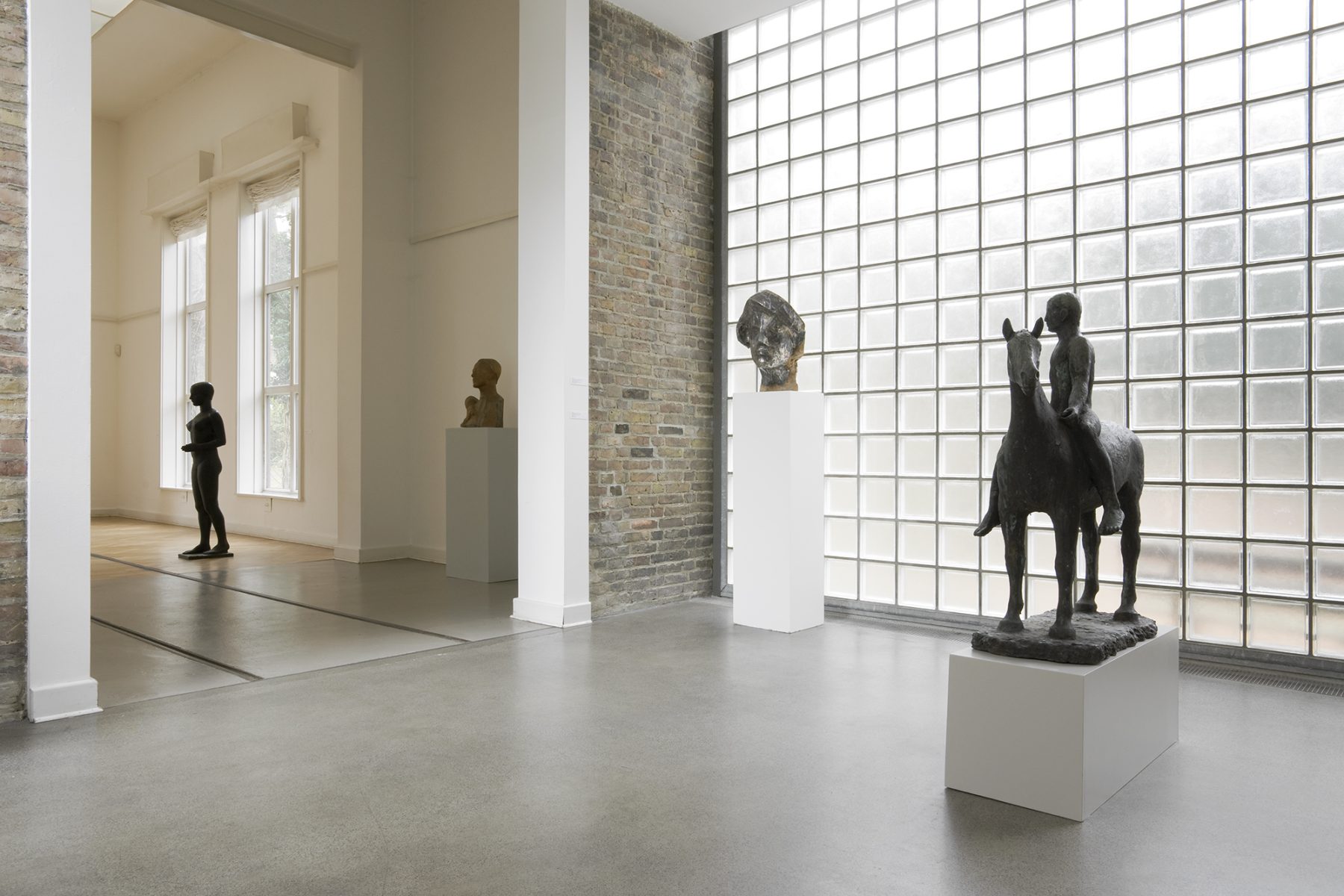
Shape - Form - Figure
Hans Wimmer and the Munich School of Sculpture
15. February 2009 – 13. April 2009
The famous Munich school of sculptors – from Adolf von Hildebrand to Fritz Koenig – is coming to the Georg-Kolbe-Museum! The exhibition was conceived by the Oberhausmuseum in Passau, to which Hans Wimmer donated a considerable part of his work during his lifetime. This sculptor is not to be honored with a solo exhibition, but instead his works will be embedded in the development of the Munich School of Sculpture. Wimmer was one of the artists who acted as a link between sculpture before and after the Second World War, who took up the tradition shaped by Hildebrand, changed it and passed it on to the next generation.
Munich sculpture was shaped by Adolf von Hildebrand, who had only moved to Munich from Italy in 1891 to erect the Wittelsbach Fountain. He achieved great influence through his work “The Problem of Form in the Visual Arts”, which he developed in exchange with the painter Hans von Marées and the philosopher Konrad Fiedler. Through his work in Munich and his teaching activities at the Munich Academy, he became the father of the Munich School of Sculpture. Through his successors – Hermann Hahn and Bernhard Bleeker – his strict statuary style remained effective. Hahn’s students included Ludwig Kasper, Anton Hiller, Toni Stadler and Heinrich Kirchner.
After the end of the Second World War, the chairs at the academy in Munich were reappointed. However, there was no break, as the Hahn students Stadler, Hiller and Kirchner were appointed as artists who had been trained in the pre-war tradition. Wimmer had been working at the Nuremberg Academy since 1949.
In the post-war years, when non-objective art was triumphant elsewhere, the Munich sculptural tradition changed cautiously without completely abandoning the subject – the image of man. Simplification, alienation and torsion became the main creative means. The third generation, such as the Stadler students Michael Croissant and Herbert Peters or the Wimmer student Wilhelm Uhlig, were still based on the human image, which was increasingly transformed into stereometric forms, especially in the case of Croissant and Koenig, but not completely abandoned. Even a sculptor like Lothar Fischer, who seemed to break away from tradition in the early 1960s, returned to the human image. (One exhibit, the colorful ‚Antiobjekt‘ by Renate Bachmayer, is reminiscent of the wild search for form in the ‚Spur‘ and ‚Geflecht‘ groups).
The exhibition focuses on the figure, torso and head. The human image is an inexhaustible theme, especially when the possibilities of abstraction and torso are included. But the head in its concentrated form, with the infinitely varied possibilities of sculpting the face, is also one of the preferred themes of figurative sculpture that concentrates on the essentials. Several important portraits are integrated into the exhibition, including a long-lost portrait of Walther Rathenau by Hermann Hahn.
An important chapter in the history of sculpture is presented, above all with loans from private collections in southern Germany, primarily from artists‘ estates. In Germany, only in Berlin was there a development of comparable standing during the same period. However, the two competing art centers differ significantly: while there were always new approaches in Berlin, the Munich tradition is convincing in its constancy and change at the same time.

